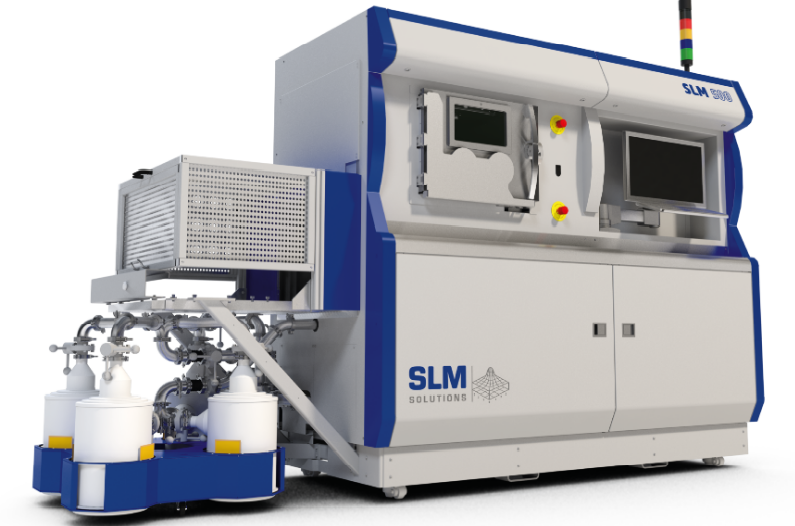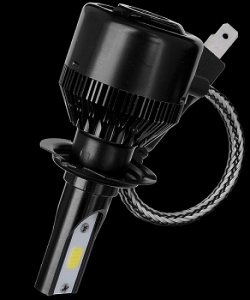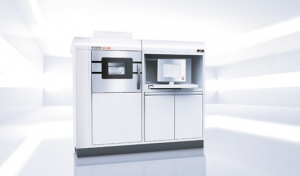CeramicSpeed partners with DTI to create innovative cycling part using SLM Solutions metal AM
3D Printing News Briefs: July 2nd, 2019
We’re talking partnerships and materials in today’s 3D Printing News Briefs. The Alfa Romeo F1 team and Additive Industries are strengthening their technology partnership, while Beam-IT and SLM Solutions are expanding their own cooperation. Metallum3D just opened a new beta testing program for its stainless steel filament, while Zortrax and CRP Technology are both introducing new materials.
Alfa Romeo F1 Team and Additive Industries Strengthen Partnership
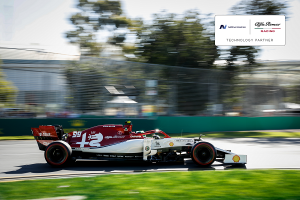 At the recent Rapid.Tech-Fabcon industrial 3D printing conference in Germany, Additive Industries announced that its current technology partnership with the F1 team of Alfa Romeo Racing would be growing stronger. The Sauber Engineering company, on behalf of Alfa Romeo Racing, has ordered an additional: 4-laser, multi-module MetalFAB1 Productivity System, bringing the total up to four systems and making it Additive Industries’ largest customer with a high-productivity metal 3D printing capacity.
At the recent Rapid.Tech-Fabcon industrial 3D printing conference in Germany, Additive Industries announced that its current technology partnership with the F1 team of Alfa Romeo Racing would be growing stronger. The Sauber Engineering company, on behalf of Alfa Romeo Racing, has ordered an additional: 4-laser, multi-module MetalFAB1 Productivity System, bringing the total up to four systems and making it Additive Industries’ largest customer with a high-productivity metal 3D printing capacity.
“Our installed base is growing fast, not only with new customers in our core markets like aerospace and the automotive industry but also through existing customers like Sauber Engineering, who are advancing to become one of the leading companies in industrial 3D printing in Europe, ramping up production,” stated Daan Kersten, the CEO of Additive Industries. “Although most users of metal additive manufacturing are still applying prototyping systems, we see an increasing number of companies concluding they need dedicated systems for series production. Our modular MetalFAB1 family is the only proven system on the market today designed for this use. We are grateful and proud to be technology partner to Sauber Engineering and the F1 team of Alfa Romeo Racing.”
Beam-IT and SLM Solutions Sign Expanded Agreement
Italian 3D printing service bureau Beam-IT and metal 3D printing provider SLM Solutions have signed an agreement, which will expand their current long-term cooperation. Together in a joint venture project, the two will work to develop more material parameters – focusing on certain material properties – for the nickel-based alloys IN939 and IN718; this process will help create a less lengthy timeframe in terms of parameter testing. Additionally, Beam-IT has added two new SLM 3D printers to its product portfolio: an SLM 280 and an SLM 500.
“We are pleased to announce our cooperation agreement with SLM Solutions and the two additional machines,” said Michele Antolotti, the General Manager of Beam-IT. “We regularly produce high-quality parts for our customers using selective laser melting because the SLM ® technology works efficiently, quickly and, above all, safely. With the expanded capacity of our new multi-laser systems we can also increase our productivity and react to the increased interest in SLM ® technology from our customers.”
Metallum3D Opens Stainless Steel Filament Beta Testing Program
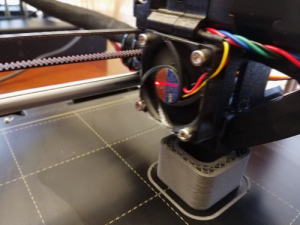 Virginia-based company Metallum3D announced that it has opened a beta test program for its stainless steel 316L 3D printing filament. This new program will support the company in its development of an affordable and accessible on-demand metal 3D platform for FFF 3D printers. The Filament Beta Test Program is open until July 31st, 2019, and a limited run of 150 0.5 kg spools of Metallum3D’s stainless steel 316L filament will be offered for a discounted price on a first come, first serve basis.
Virginia-based company Metallum3D announced that it has opened a beta test program for its stainless steel 316L 3D printing filament. This new program will support the company in its development of an affordable and accessible on-demand metal 3D platform for FFF 3D printers. The Filament Beta Test Program is open until July 31st, 2019, and a limited run of 150 0.5 kg spools of Metallum3D’s stainless steel 316L filament will be offered for a discounted price on a first come, first serve basis.
Nelson Zambrana, the CEO of Metallum3D, said, “Our 1.75mm Stainless Steel 316L filament material has a metal content of 91.7% by weight or 61.5% by volume, while maintaining enough flexibility for a minimum bend diameter of 95 mm (3.75 in.). The combination of high metal loading and filament flexibility was a tough material development challenge that took us over a year to solve.”
Zortrax Introducing Biocompatible Resins for Inkspire 3D Printer
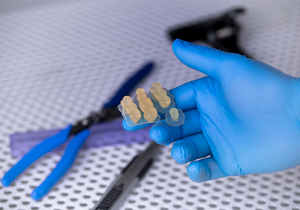 Last year, Polish 3D printing solutions provider Zortrax developed the Inkspire, its first resin 3D printer. The Inkspire uses UV LCD technology to create small and precise models for the architecture, jewelry, and medical industries. With this in mind, the company is now introducing its specialized biocompatible resins that have been optimized for the Inkspire to make end use models in dentistry and prosthetics.
Last year, Polish 3D printing solutions provider Zortrax developed the Inkspire, its first resin 3D printer. The Inkspire uses UV LCD technology to create small and precise models for the architecture, jewelry, and medical industries. With this in mind, the company is now introducing its specialized biocompatible resins that have been optimized for the Inkspire to make end use models in dentistry and prosthetics.
The new class IIa biocompatible Raydent Crown & Bridge resin is used for 3D printing temporary crowns and bridges, and is available in in an A2 shade (beige), with high abrasion resistance for permanent smooth surfaces. Class I biocompatible Raydent Surgical Guide resin for precise prosthetic surgical guides is safe for transient contact with human tissue, and offers translucency and high dimensional accuracy. With these new materials, the Zortrax Inkspire can now be used by prosthetic laboratories for prototyping and final intraoral product fabrication.
CRP Technology Welcomes New Flame Retardant Material
In April, Italy-based CRP Technology introduced its Windform P-LINE material for for high-speed, production-grade 3D printing. Now, it’s officially welcoming another new material to its polyamide composite family – Windform FR1, the first carbon-filled flame-retardant laser sintering material to be rated V-0. The material is from the Windform TOP-LINE family, and passed the FAR 25.853 12-second vertical, the 15-second horizontal flammability tests, and the 45° Bunsen burner test. The lightweight, halogen-free material combines excellent stiffness with superior mechanical properties, and is a great choice for applications in aerospace, automotive, consumer goods, and electronics.
“Only a few days from the launch of a new range of Windform® materials, the P-LINE for HSS technology, I’m very proud to launch a new revolutionary composite material from the Windform® TOP-LINE family of materials for Laser Sintering technology,” said Franco Cevolini, VP and CTO at CRP Technology. “Our aim is to constantly produce technological breakthroughs. With Windform® FR1 we can steer you toward the proper solution for your projects.
“We will not stop here, we will continue our work on renewal and technological expansion in the field of Additive Manufacturing. Stay tuned!”
Discuss these stories and other 3D printing topics at 3DPrintBoard.com or share your thoughts in the Facebook comments below.
BeamIT and SLM Solutions expand cooperation on metal AM
Rolls Royce Chooses SLM Solutions’ SLM 500 Quad-Laser for Aerospace Additive Manufacturing Processes
Rolls Royce continues their foray into additive manufacturing on an even larger scale, selecting the SLM Solutions’ SLM®500 quad-laser machine, furthering progressive production; however, these parts are not meant for their cars, but instead will aid in fabrication of aerospace components—an industry where they also lead in manufacturing of quality engines common to Airbus and Boeing.
 Headquartered in Germany (with other offices around the globe), SLM Solutions Group AG is a manufacturer of AM technology and multi-laser machines. Their expertise in multi-laser optics, along with a patented bi-directional recoating mechanism offers significant credibility to their brand, with the SLM 500—on the market since 2013—boasting four lasers enabling build rates up to 171 cm3.
Headquartered in Germany (with other offices around the globe), SLM Solutions Group AG is a manufacturer of AM technology and multi-laser machines. Their expertise in multi-laser optics, along with a patented bi-directional recoating mechanism offers significant credibility to their brand, with the SLM 500—on the market since 2013—boasting four lasers enabling build rates up to 171 cm3.
“The SLM®500 serves as the flagship metal 3D printer for high volume processes while offering automated, closed-loop material supply, recovery and sieving to minimize operator handling of metal powder,” states the company in a recent press release sent to 3DPrint.com.
While Rolls Royce is certainly no stranger to precision in parts, as well as accommodating safety measures, building aerospace components lends an even higher level of challenge in production due to stringent certifications required for every part.
“Rolls-Royce is very advanced in additive layer manufacturing, with a state-of-the-art approach and expert team working on extremely complex metal additive manufacturing solutions. SLM Solutions recognized the need at Rolls-Royce for a supplier to support with equipment qualification,” said Meddah Hadjar, CEO of SLM Solutions Group AG.
“We work closely to develop products that meet their needs to assure aerospace certified part quality levels. This way the Rolls-Royce team can document their expertise and control of the systems adhering to strict regulations and keep their ambitious and innovative additive production plans on track.”
While Rolls-Royce has complex manufacturing needs, along with a checklist for industry aerospace regulations and inspections to be considered, they also must meet the obvious demands for productivity. With the four laser SLM 500, and the control of inert gas flow, they can keep a constantly controlled work atmosphere in the build chamber, with gas flow and control mechanisms perfected.
” We are delighted to be working with SLM Solutions and using their quad-laser machines. Rolls-Royce continues to develop our additive layer manufacturing capability to ensure we are at the forefront of advanced manufacturing,” said Neil Mantle, Head of Additive Layer Manufacturing at Rolls-Royce. “We knew that transferring our expertise and knowledge gained from single laser machines to multi-laser platforms would require a close working relationship and SLM Solutions have provided this.”
Rolls-Royce is now part of the SLM Solutions beta customer program too, as they all look forward to new machine accessories in the future.
Embracing additive manufacturing quietly for decades, the automotive industry continues to roll out impressive new prototypes and parts—from BMW to Ford to a range of racing cars—and even the top of the line at Rolls Royce, with their Phantom bearing over 10,000 3D printed parts, and future plans for their luxury vehicles, such as personalized exteriors. What do you think of this news? Let us know your thoughts! Join the discussion of this and other 3D printing topics at 3DPrintBoard.com.
[Source / Images: SLM Solutions]
Betatype Case Study Illustrates Cost and Time Savings of Using 3D Printing to Fabricate Automotive Components
 When it comes to industrial 3D printing for automotive applications, London-based Betatype is building up considerable expertise. The 3D printing company was founded in 2012, and works with its customers to deliver functional, 3D printed components. Betatype built a data processing platform called Engine to help manage and control multi-scale design; the platform maximizes the ability of 3D printing to provide control in one process over material, shape, and structure.
When it comes to industrial 3D printing for automotive applications, London-based Betatype is building up considerable expertise. The 3D printing company was founded in 2012, and works with its customers to deliver functional, 3D printed components. Betatype built a data processing platform called Engine to help manage and control multi-scale design; the platform maximizes the ability of 3D printing to provide control in one process over material, shape, and structure.
Some of the benefits provided by 3D printing include high cost-per-part, productivity, and volume, especially when it comes to using metals. Betatype recently completed a case study that demonstrates how the advantages of metal 3D printing can be properly leveraged for applications in automotive parts production. It focuses on Betatype’s use of laser powder bed fusion (LPBF, also called Powder Bed Fusion, DMLS and SLM) 3D printing and optimization technology to, as the case study puts it, challenge “the current status quo” by producing 384 qualified metal parts in one build, which helped lower both lead time and cost per part.
“When it comes to automotive and other consumer-facing industries focused on producing high volumes of parts at low costs, the current generation of Additive Manufacturing (AM) processes is generally considered incapable of meeting these needs,” Betatype explained in its study.
“The key to making AM productive enough for wider adoption across these high-volume industries, however, lies in process economics – choosing the most effective manufacturing process for each part. Combining these principles with Betatype’s knowledge of the limits of additive – as well as how and when to push them – together with the company’s powerful optimisation technology, supports customers with the design and production of parts that not only perform better, but that are economically viable against existing mass production technologies.”
You’ll often hear people in the 3D printing industry saying that one of the benefits of the technology is its ability to offer greater design freedom than what you’d find in more conventional manufacturing process. While this is true – 3D printing can be used to produce some pretty complex geometry – that doesn’t mean it’s without its own problems. It’s necessary to understand these constraints in order to find applications that can fit with the technology, and be used in high volume manufacturing as well.
Processes like die casting are capable of creating millions of components a year. 3D printing is valuable due to its capability of using the least amount of material to provide geometrically complex parts. Often 3D printing just doesn’t have the manufacturing volume or part cost to be an economical choice. But, this may not be the case for long.
According to the case study they looked at, “how it is possible to combine the innate geometric capabilities of AM with increased production volumes of cost-effective parts and improved performance” The team looked at “the Automotive industry’s switch to the use of LED headlights, which brings with it new challenges in thermal management.”
Most LED headlights need larger heatsinks, which are typically actively cooled. Betatype realized that the geometry of these metal parts would make them a good candidate for metal 3D printing, which is able to combine several manufacturing processes into just one production technique.
Betatype realized that LPBF would be ideal during the component’s initial design stage, and so was able to design the component with in-built support features. This made it possible to stack multiple headlight parts without requiring any additional supports; in addition, the company maintains that completed parts could be snapped apart by hand without any other post-processing required. This claim is something that we are highly skeptical about. No destressing or tumbling, shot peening, HIP or other processes usually result in parts that look different from the ones in the images given to us.
Depending on part geometry it can be difficult to achieve full stacking with LPBF 3D printing. This is largely due to thermal stresses placed on parts and supports. Betatype designed the part in such a way as to decrease these stresses. This is what allowed Betatype to nest a series of heatsinks in order to maximize build volume and produce nearly 400 parts in one build envelope using an EOS M 280 3D printer owned by Progressive Technology.
“Through specific control parameters, the exposure of the part in each layer to a single toolpath where the laser effectively melted the part was reduced significantly, with minimal delays in between.”
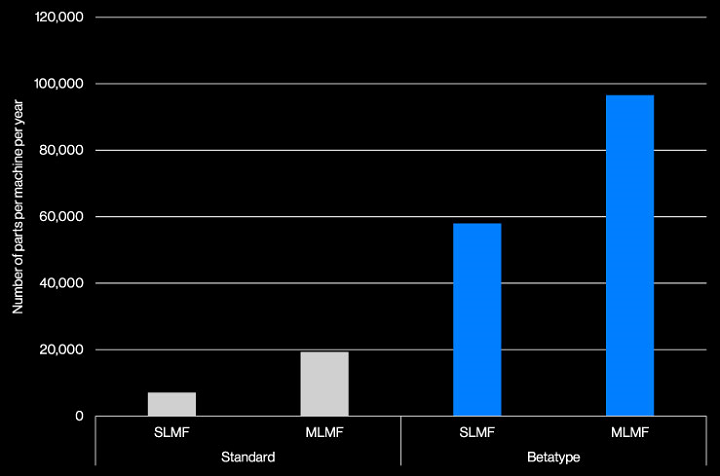
13 x the productivity per system. Estimated Number of Parts per Machine per Year/Model built on build times provided by Progressive Technology for SLMF system (EOS M 280) and Renishaw AMPD for MLMF system (RenAM 500Q).
One of the large drivers in part cost is equipment amortization, and it’s important to lower build time in order to make parts more cost-effective. By using LPBF 3D printing and its own process IP and optimization algorithms, Betatype claims to have reduced cost-per-part from over $40 to less than $4, and lower the build time from one hour to less than five minutes per part – ten times faster than what a standard build processor is capable of performing. This would be a huge leap in capability for metal printing if these cost estimates stack up.
On single laser systems, like the EOS M 280 and Renishaw’s RenAM 500M, Betatype says that lowered the build time for all 384 parts from 444 hours to less than 30 hours; this number went down even further, to less than 19 hours, by using new multi-laser systems like the SLM Solutions 500 and the RenAM 500Q.
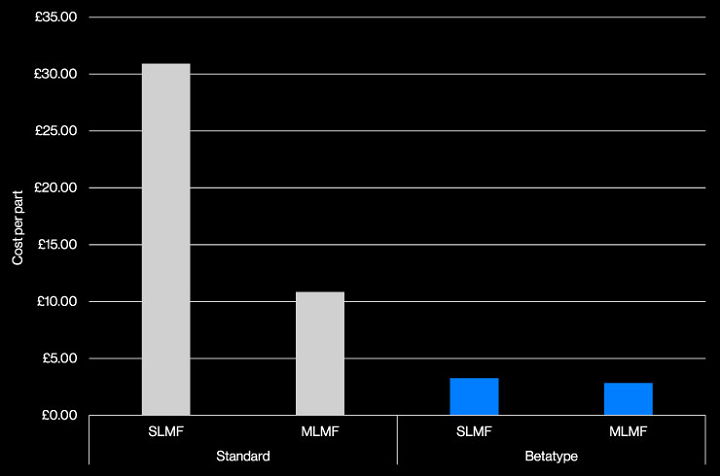
Up to 90% reduction in part cost. Estimated Cost per Part / Model built on build times provided by Progressive Technology for SLMF system (EOS M 280) and Renishaw AMPD for MLMF system (RenAM 500Q).
Betatype’s claims that their customer was able to achieve a productivity gain of 19 times the old figure per system in a year – going from 7,055 parts to a total of 135,168.
The case study concludes, “With an installation of 7 machines running this optimised process, volumes can approach 1 million parts per year — parts that are more functional and more cost-effective.”
It always good to show performance that is a step change ahead of what everyone thought possible. It is also significant that companies are making detailed case studies and verifiable claims as to output and yield. Betatype’s Case Study shows very promising numbers and we hope that productivity can indeed reach these heights with their technology.
Discuss this story and other 3D printing topics at 3DPrintBoard.com or share your thoughts in the Facebook comments below.
[Images provided by Betatype unless otherwise noted]




